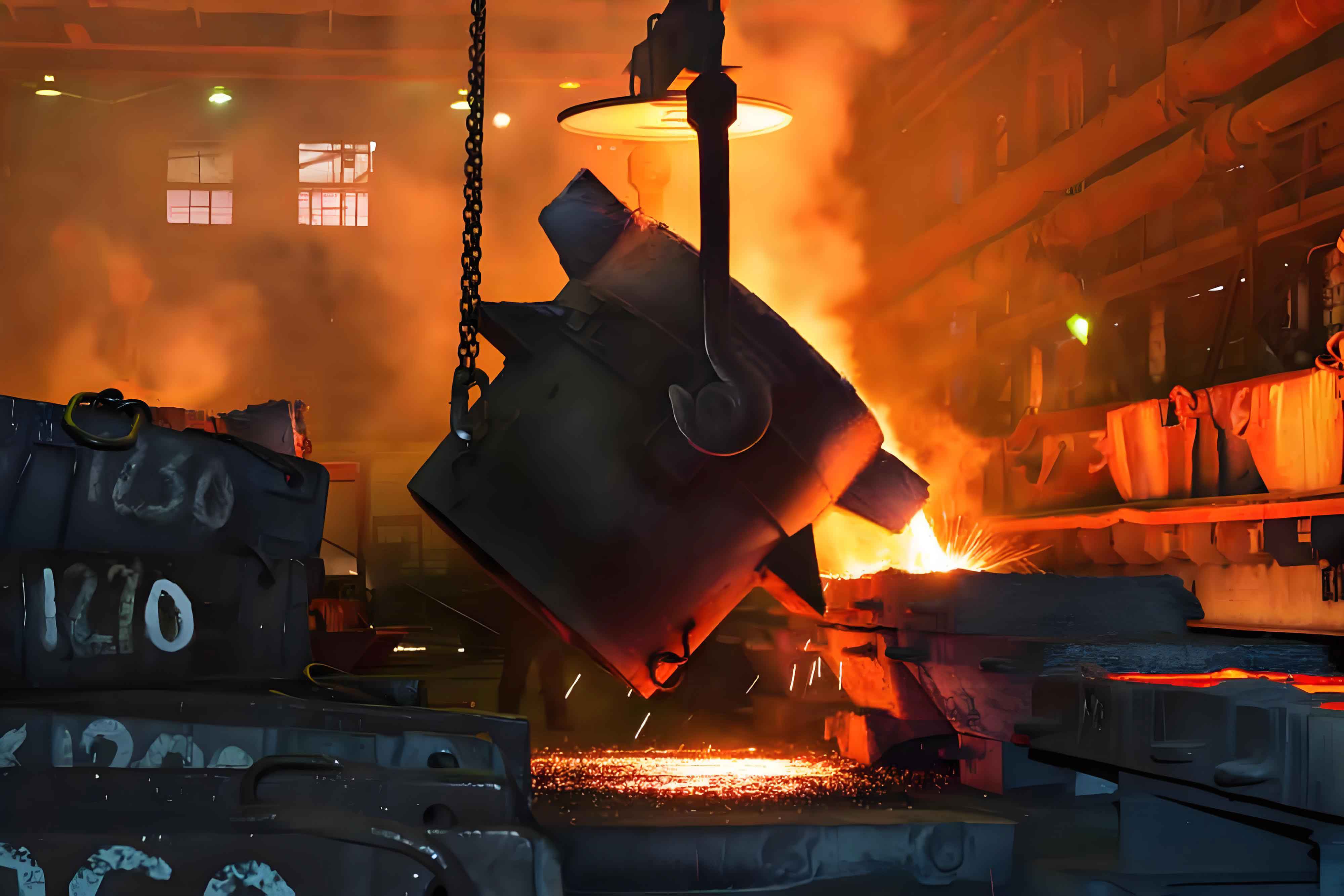Sand casting has been a cornerstone of metalworking for centuries, providing a versatile and cost-effective method for producing metal components. As we look to the future, industry experts predict significant advancements and trends that will shape the next generation of sand casting. This article explores these trends, drawing insights from leading professionals in the field.

Introduction
Sand casting continues to evolve, driven by technological advancements, environmental considerations, and the demand for higher quality and efficiency. The future of sand casting promises exciting developments that will enhance its capabilities and applications across various industries.
Key Trends and Predictions
- Digitalization and Industry 4.0
- Advanced Materials and Alloys
- Sustainable Practices
- Automation and Robotics
- Enhanced Quality Control
- Customization and Rapid Prototyping
Digitalization and Industry 4.0
The integration of digital technologies is revolutionizing sand casting, ushering in the era of Industry 4.0. This involves the use of IoT (Internet of Things), AI (Artificial Intelligence), and data analytics to enhance process control and efficiency.
Predictions:
- Smart Foundries: Fully automated and interconnected foundries will optimize production processes, reduce downtime, and improve quality.
- Predictive Maintenance: IoT-enabled sensors and AI will predict equipment failures before they occur, reducing maintenance costs and increasing uptime.
- Digital Twins: Creating digital replicas of casting processes will allow for real-time monitoring and optimization.
Advanced Materials and Alloys
The development of new materials and alloys is expanding the possibilities of sand casting, enabling the production of components with superior properties.
Predictions:
- High-Performance Alloys: The use of high-performance alloys will enhance the mechanical properties, durability, and thermal resistance of cast components.
- Nano-Enhanced Materials: Incorporating nanotechnology will improve the strength and wear resistance of materials used in sand casting.
- Lightweight Materials: The demand for lightweight components, especially in the automotive and aerospace industries, will drive the development of new, lighter alloys.
Sustainable Practices
Sustainability is becoming increasingly important in manufacturing, and sand casting is no exception. Efforts to reduce environmental impact are leading to more sustainable practices.
Predictions:
- Recycling and Reuse: Improved methods for recycling sand and other materials will reduce waste and lower costs.
- Eco-Friendly Binders and Coatings: The development and use of eco-friendly binders and coatings will minimize environmental impact.
- Energy Efficiency: Adoption of energy-efficient technologies and renewable energy sources will reduce the carbon footprint of sand casting operations.
Automation and Robotics
Automation and robotics are transforming the sand casting industry by improving precision, consistency, and efficiency.
Predictions:
- Robotic Molding and Pouring: Robots will handle repetitive and dangerous tasks, such as mold preparation and metal pouring, increasing safety and efficiency.
- Automated Inspection: Automated inspection systems using AI and machine vision will ensure higher quality and consistency in cast parts.
- Collaborative Robots: Cobots (collaborative robots) will work alongside human operators to enhance flexibility and productivity.
Enhanced Quality Control
Quality control is critical in sand casting, and future advancements will focus on improving accuracy and reducing defects.
Predictions:
- Real-Time Monitoring: Advanced sensors and AI will provide real-time monitoring of casting processes, allowing for immediate adjustments and defect prevention.
- Non-Destructive Testing (NDT): Enhanced NDT methods will enable thorough inspection of cast parts without damaging them.
- Big Data Analytics: Analyzing large datasets from casting processes will identify patterns and optimize quality control measures.
Customization and Rapid Prototyping
The demand for customized and rapidly prototyped components is growing, and sand casting is adapting to meet these needs.
Predictions:
- Additive Manufacturing Integration: Combining sand casting with additive manufacturing (3D printing) will allow for the creation of complex molds and rapid prototyping.
- On-Demand Manufacturing: The ability to quickly produce customized components will cater to industries requiring small batch production and unique specifications.
- Flexible Production Lines: Adaptable production lines will enable quick shifts between different casting projects, enhancing responsiveness to market demands.
Comparative Table of Future Trends
| Trend | Key Developments | Benefits |
|---|---|---|
| Digitalization and Industry 4.0 | Smart foundries, predictive maintenance, digital twins | Optimized processes, reduced downtime, improved quality |
| Advanced Materials and Alloys | High-performance alloys, nano-enhanced materials, lightweight alloys | Enhanced properties, better performance, reduced weight |
| Sustainable Practices | Recycling, eco-friendly binders, energy efficiency | Lower environmental impact, cost savings |
| Automation and Robotics | Robotic molding, automated inspection, cobots | Increased safety, consistency, efficiency |
| Enhanced Quality Control | Real-time monitoring, advanced NDT, big data analytics | Higher accuracy, reduced defects |
| Customization and Rapid Prototyping | Additive manufacturing, on-demand production, flexible lines | Fast production, tailored components |
Practical Implications and Applications
- Automotive Industry:
- Advanced Materials: Lightweight and high-performance alloys will reduce vehicle weight and improve fuel efficiency.
- Customization: Rapid prototyping will enable the quick development of custom parts for new models and concepts.
- Aerospace Industry:
- Quality Control: Enhanced NDT and real-time monitoring will ensure the reliability and safety of critical aerospace components.
- Sustainability: Eco-friendly practices will align with the industry’s stringent environmental regulations.
- Industrial Machinery:
- Automation: Robotic systems will improve the efficiency and safety of producing large, complex machinery components.
- Digitalization: Smart foundries will optimize production processes and reduce downtime, enhancing overall productivity.
- Medical Devices:
- Customization: The ability to rapidly prototype and customize parts will support the development of specialized medical equipment and implants.
- Material Advancements: New materials with superior biocompatibility and mechanical properties will improve the performance of medical devices.
Conclusion
The future of sand casting is marked by significant advancements that will enhance its capabilities and applications across various industries. Digitalization, advanced materials, sustainable practices, automation, enhanced quality control, and customization are key trends that will shape the next generation of sand casting. By adopting these innovations, manufacturers like ZHY Sand Casting are poised to lead the industry, delivering high-quality, efficient, and environmentally friendly casting solutions. Continuous research and development will further drive these trends, ensuring that sand casting remains a vital and evolving manufacturing process.
